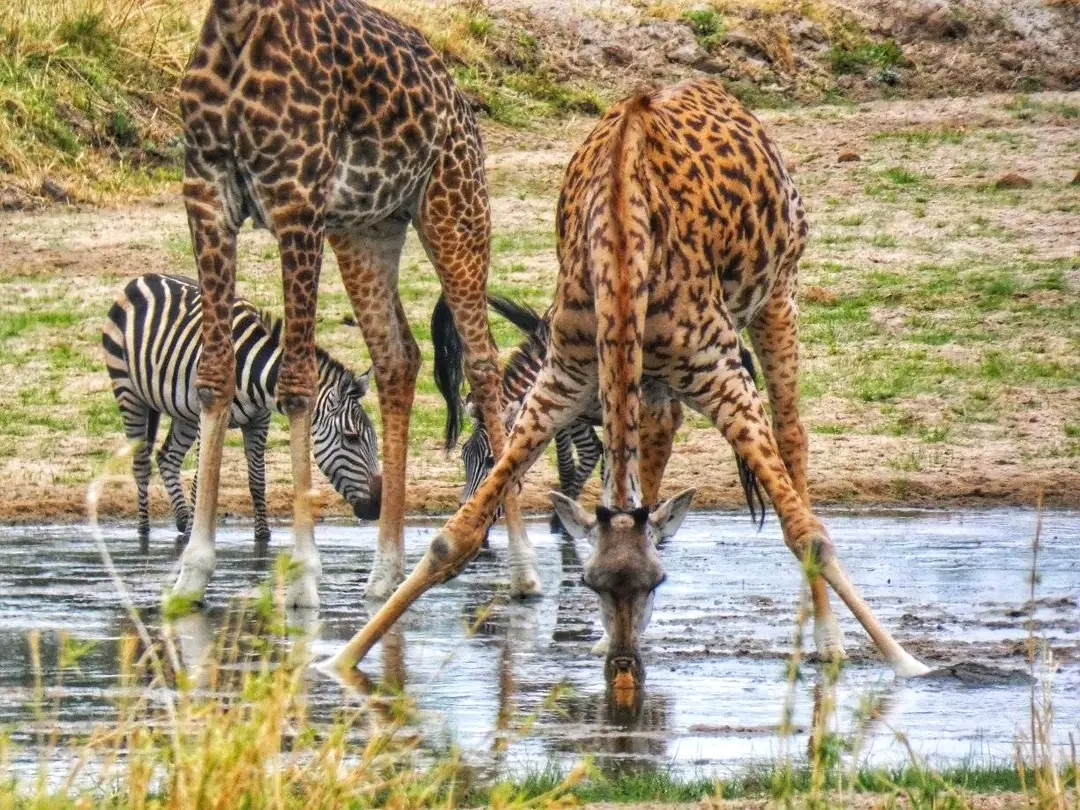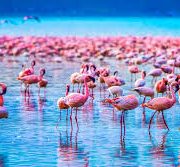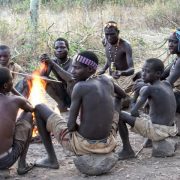
Lake Manyara National Park – A Hidden Gem of Northern Tanzania
Lake Manyara National Park, nestled at the base of the Great Rift Valley escarpment in northern Tanzania, is one of the country’s most diverse and picturesque national parks. Though smaller in size compared to its famous neighbors like Serengeti and Ngorongoro, Lake Manyara is a compact paradise offering rich wildlife, varied landscapes, and a tranquil safari experience. Covering around 330 square kilometers, of which two-thirds is the alkaline Lake Manyara, the park offers visitors a unique blend of scenery, birdlife, and big game.
🌍 A Scenic Marvel at the Edge of the Great Rift Valley
One of the most striking features of Lake Manyara National Park is its dramatic scenery. As you enter the park, you are immediately surrounded by a lush groundwater forest teeming with birdlife and monkeys. The forest gives way to expansive floodplains, acacia woodlands, and hot springs each habitat supporting a distinct variety of wildlife. The Great Rift Valley wall, rising steeply to the west of the park, creates a spectacular backdrop that enhances the park’s visual appeal. This geographical setting makes Lake Manyara one of the most photogenic parks in Africa.
🦁 The Legendary Tree-Climbing Lions
Lake Manyara is famously known for its tree-climbing lions, a rare behavior not commonly seen in other parks. These lions are often spotted lazing on the branches of acacia trees, especially during the hotter parts of the day. The reasons behind this unique behavior are not fully understood, but it’s believed to help avoid biting insects or provide a better vantage point for spotting prey. Catching a glimpse of these majestic lions lounging high above the ground is a unique and unforgettable safari highlight.
🐘 Elephant Haven
Lake Manyara is home to a healthy population of African elephants, often seen in family groups moving through the forest or across the plains. The park became world-famous thanks to the work of zoologist Iain Douglas-Hamilton, who conducted groundbreaking elephant research here. Manyara’s elephants are known for their relaxed demeanor, making it one of the best places to observe these gentle giants up close, in their natural habitat.
🐦 A Birdwatcher’s Paradise
With over 400 recorded bird species, Lake Manyara is one of the best birding destinations in Tanzania. The shallow waters of the alkaline lake attract thousands of flamingos, pelicans, storks, herons and cormorants. The forested areas provide habitat for forest species such as crowned eagles, hornbills and silvery-cheeked hornbills. Whether you’re a serious birder or simply enjoy the beauty of birds in flight, Lake Manyara delivers spectacular avian encounters throughout the year.
🐒 Primates and Other Wildlife
In addition to its famous lions and elephants, Lake Manyara is home to a wide array of other animals. Large troops of baboons, sometimes numbering up to 100 individuals, are a common sight and a major attraction in the park. Blue monkeys, vervet monkeys, and bush babies also inhabit the forested areas. The park’s open areas host herds of buffaloes, zebras, giraffes, wildebeests, warthogs and impalas. Occasionally, leopards and spotted hyenas can also be spotted, especially during early morning game drives.
🌋 Maji Moto – The Hot Springs
On the southern end of the park, visitors can explore the Maji Moto hot springs, where geothermal activity has created steamy pools and bubbling mud. These springs provide a fascinating contrast to the cooler forested areas and are surrounded by unique vegetation adapted to the mineral-rich environment.
🛖 Safari and Accommodation Options
Though smaller in size, Lake Manyara offers high-quality safari experiences, including:
-
Game drives along scenic routes.
-
Canoeing (seasonal) on Lake Manyara for a different perspective of the park.
-
Night game drives (offered in select lodges) to observe nocturnal wildlife.
-
Walking safaris outside the park in the nearby community-managed areas.
There are various accommodation options, from budget-friendly campsites to luxury eco-lodges with views over the lake or the escarpment.
🌱 Conservation and Community Involvement
Lake Manyara is part of the larger Lake Manyara Biosphere Reserve, established by UNESCO. It plays a vital role in the conservation of biodiversity and supports sustainable tourism initiatives. Many safari operators and lodges collaborate with local communities to ensure that tourism benefits the surrounding population through employment, cultural exchange and development projects.
✨ Conclusion
Lake Manyara National Park is a hidden gem that offers visitors an intimate and scenic wildlife experience. Its unique blend of ecosystems, the chance to see rare tree-climbing lions, diverse birdlife and peaceful ambiance make it a perfect addition to any northern Tanzania safari itinerary.
Whether you’re a first-time visitor to Africa or a seasoned safari-goer, Lake Manyara’s magic is sure to leave you with lasting memories.
📅 Best Time to Visit
Lake Manyara National Park is a year-round destination:
-
Dry Season (June to October): Best for wildlife viewing, as animals gather around water sources and vegetation is sparse.
-
Wet Season (November to May): Lush landscapes and excellent birdwatching, with thousands of migratory birds present. Calving season also occurs during this time, drawing predators and dramatic wildlife interactions.
Recent Posts
🌿 Lake Manyara National Park – Tanzania’s Hidden Gem of Biodiversity
Guardians of Ancient Traditions – The Hadzabe Tribe of Tanzania
Tarangire National Park – Tanzania’s Timeless Wilderness
All Categories

Thailand





